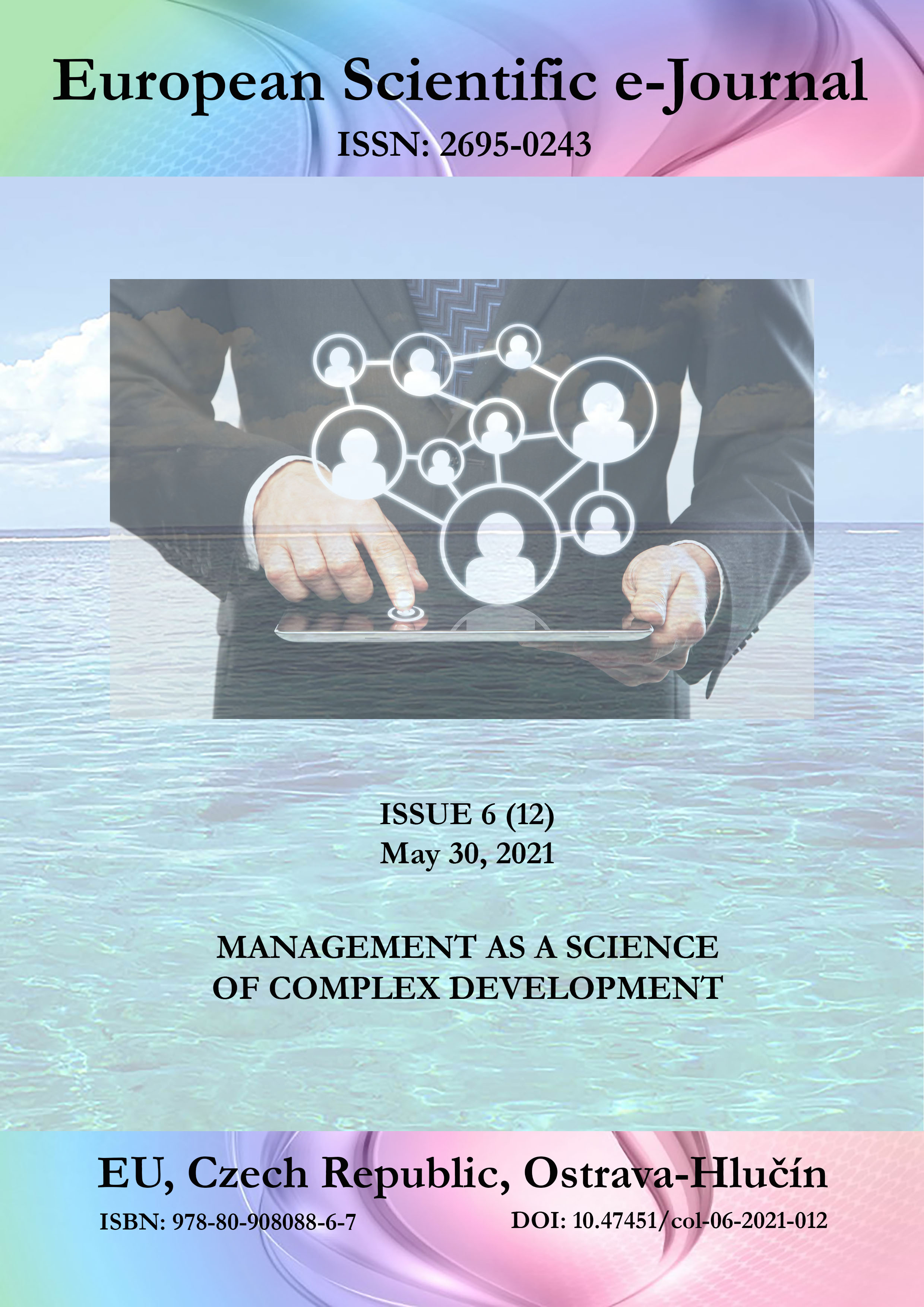Management of the Business Enterprise and Its Integrated Development
DOI:
https://doi.org/10.47451/man2021-04-002Keywords:
business enterprise, subsystem, management, object and subject, developmentAbstract
The business enterprise is an object of management because it is being built and operates under the rules and norms established in the legislation of each country. The business enterprise can be also taken up as a subject of economy. The aim of the development is to analyze the peculiarities of the business enterprise, which is an open system made up of system-forming elements implying its integrated development. The methodical instruments used are based on several complementary approaches: a systematic approach and systematic analysis; a structural approach; a logical approach and a synergetic approach. Based on the principles of the systematic approach, we accept that the business enterprise is an “input-output system”. The “business enterprise” system are: production (business), financial and economic, juridical (legal) and social. The synergy between the constituent elements of its internal environment implies not only its integrity, but it is a major prerequisite for its successful integration into the external environment conditions.
Downloads
References
Albino, V., Nicolt, M. De, Petruzzelli, A., & Yazan, D. (2011). Integrating Enterprise Input-Output Modelling with GIS Technology for Supply Chain Analysis. International Input–Output Association. http://www.iioa.org
Albino, V., & Koehtz, S. (2004). Enterprise input–output model for local sustainable development – the case of a tiles manufacturer in Italy. Resources, Conservation and Recycling, 41, 165–176.
Ansoff, I. (1965). Corporate Strategy: an analytic approach to business policy for growth and Expansion. New York, NY: McGraw-Hill.
Atanassova, T. (2002). Analysis and evaluation of legal organizational forms of agricultural enterprises – on the example of Stara Zagora region. Dissertation.
Atanassova, T. (2012). The business enterprise – object of management and subject of the economy. Stara Zagora: Iskra-MI.
Atanassova, T. (2016). Management of the enterprise. Stara Zagora: Thracian University.
Bannock, G., Baxter, R., & Davis. E. (1992). World Dictionary of Economics, 1. Burgas: Delfinpres.
Bushev, M. (1992). Synergetics, chaos, order, self-organization. Sofia: “St. Kliment Ohridski” University.
Drucker, P. (2006). The Practice of Management. HarperCollins e-books.
Hicks, R. (1946). Value and Capital: Inquiry into some Fundamental Principles of Economic Theory (2nd ed.). Oxford University Press.
Kiranchev, G. (2011). Invisible hands of cross-sectional relationships. Krizata. http://krizata.blog.bg/biznes/2011/11/08
Kolhlus, J., & Waldburger, H. (1978). Informatik fuer EDV-Benuetzer. Bern, Stuttgart.
Lenzen, M., & Lundie, S. (2012). Constructing enterprise input-output tables – a case study of New Zealand dairy products. Journal of Economic Structures, 1, 6.
Lin, X., & Polenske, K. (1998). Input-Output Modelling of Production Processes for Business Management. Structural Change and Economic Dynamics, 9, 205–226.
Stankov, V. (1997). Theoretische Thesen ueber Unternehmen in der Landwirtschaft und ihre Verwirkungen in der Agrarreform in Bulgarien. Privatisierungsprozess. Rechtsformen und Betriebsstrukturen in Agrarbereich der mittel- und osteneuropaeischen Laender, 93–103. Halle-Saale: IAMO.
Stankov, V. et al. (1997). Organization and management of the agricultural enterprise (Agromanagement). Sofia: PSSA.
Stankov, V. (2009). The enterprise and its management – modern characteristics of economy. Economic Thought, 1, 49.
Steffen, B. (1987). Betriebs- und Unternehmensfuehrung in der Landwirtschaft. Stuttgart: Verlag Ulmer.
Unternehmen II: Wahl der Rechtsform (1980). Handwoerterbuch der Wirtschaftswissenschaft, 8, 71–80. Stuttgart und New York: Verlag Gustav Fischer.
Woehe, G. (1993). Einfuehrung in der Allgemeine Betribswirtschaftslehre. 18. Auflage. Muenchen: Verlag Vahlen.
Published
Issue
Section
License
Copyright (c) 2025 European Scientific e-Journal

This work is licensed under a Creative Commons Attribution 4.0 International License.
The European Scientific e-Journal (ESEJ) is an open access journal. Articles are available free of charge as PDF files on the website of the European Institute for Innovation Development. PDF files can be previewed with Acrobat Reader from www.adobe.com.
All articles of the “Tuculart Student Scientific” are published under a Creative Commons Attribution 4.0 Generic (CC BY 4.0) International license.
According to the Creative Commons Attribution 4.0 Generic (CC BY 4.0) International license, the users are free to Share — copy and redistribute the material in any medium or format for any purpose, even commercially (the licensor cannot revoke these freedoms as long as you follow the license terms).
Under the following terms:
- Attribution — You must give appropriate credit, provide a link to the license, and indicate if changes were made. You may do so in any reasonable manner, but not in any way that suggests the licensor endorses you or your use.
- No additional restrictions — You may not apply legal terms or technological measures that legally restrict others from doing anything the license permits.


